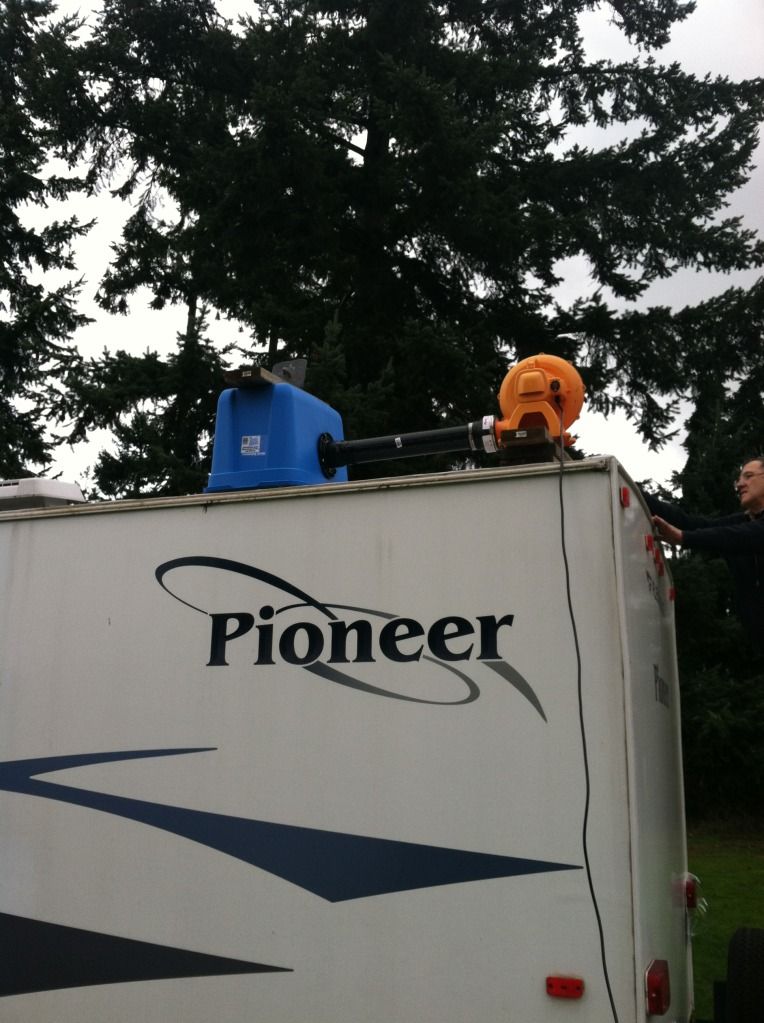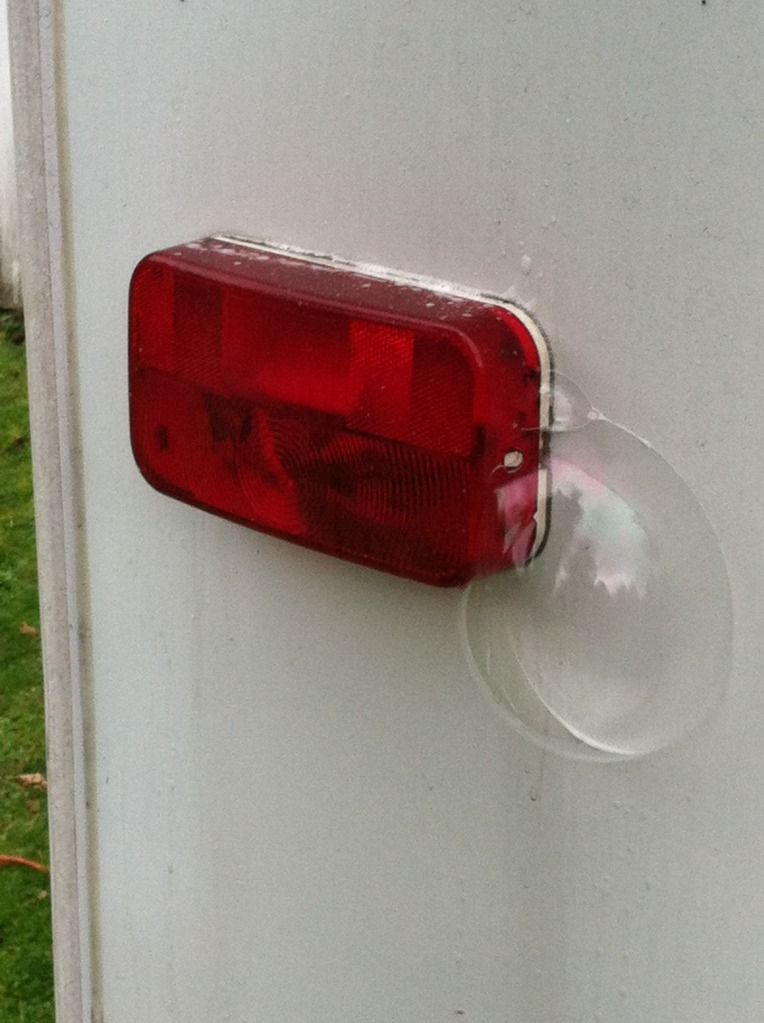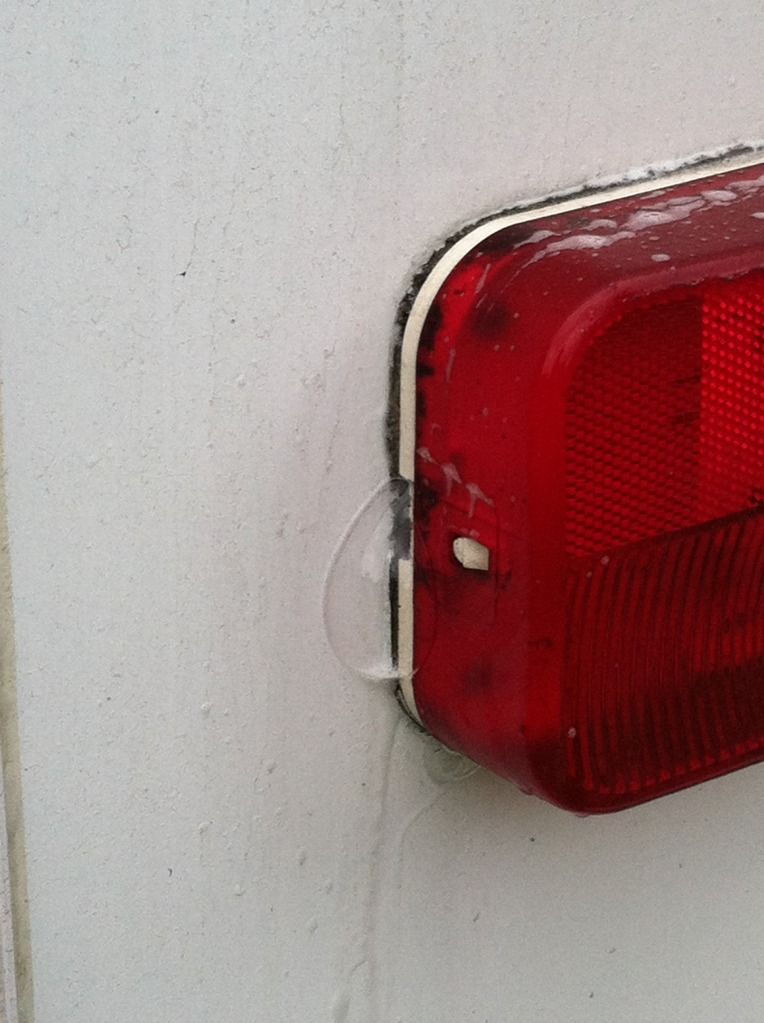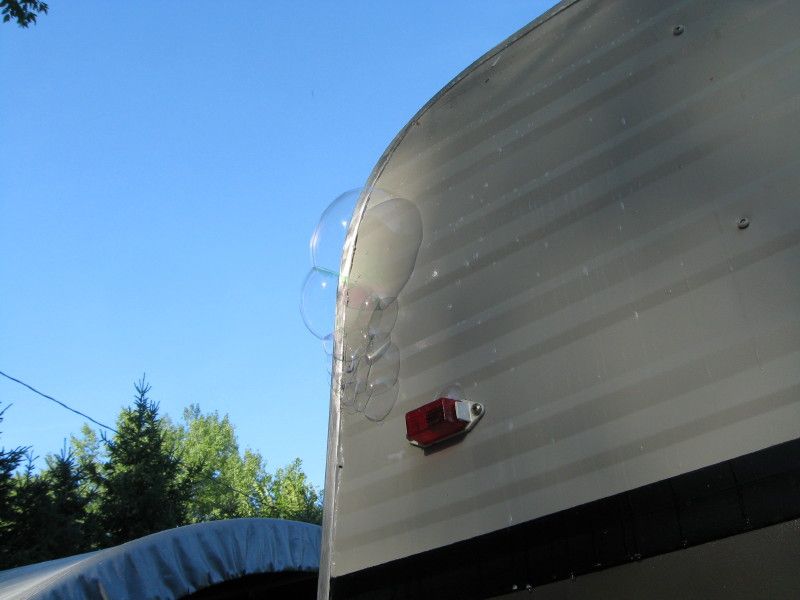- Good Sam Community
- Groups
- Travel Trailer Group
- Forum
- Re: My leak test setup
- Subscribe to RSS Feed
- Mark Topic as New
- Mark Topic as Read
- Float this Topic for Current User
- Bookmark
- Subscribe
- Mute
- Printer Friendly Page
My leak test setup
- Mark as New
- Bookmark
- Subscribe
- Mute
- Subscribe to RSS Feed
- Permalink
- Report Inappropriate Content
Feb-18-2013 11:38 AM
Step one was to find/confirm the location of the leak(s) and fix. I did some poking around here and came up with some good ideas for finding leaks. After some thought of what I have lying around the house I came up with the following: pump for my kids' bouncy house. A trip to Home Depot for some PVC, fittings and a plastic tub ($30) resulted in this setup. Worked like a charm! Found all the leaks this weekend and was pleasantly surprised that there were only a few. With the right setup, a squirt bottle of soapy water can be magic!
Just thought I would share incase anyone else could benefit from this in the future.




- Mark as New
- Bookmark
- Subscribe
- Mute
- Subscribe to RSS Feed
- Permalink
- Report Inappropriate Content
May-31-2013 09:31 AM
- Mark as New
- Bookmark
- Subscribe
- Mute
- Subscribe to RSS Feed
- Permalink
- Report Inappropriate Content
May-31-2013 08:54 AM
Note: One end of the U-tubing is left open. If using the manometer to test the propane regulator, make sure it can't fall over. If it does so the propane pressure can blow the water out of the tube, allowing propane to escape and cause a potential fire hazard.
Don't ask how I know this...
- Mark as New
- Bookmark
- Subscribe
- Mute
- Subscribe to RSS Feed
- Permalink
- Report Inappropriate Content
May-31-2013 07:46 AM
westend wrote:
I used an HVAC furnace blower in a window and a DIY manometer which showed 1 inch of water column.
Can you show pictures of your setup and how did you make your manometer
- Mark as New
- Bookmark
- Subscribe
- Mute
- Subscribe to RSS Feed
- Permalink
- Report Inappropriate Content
May-31-2013 06:49 AM
I applaud you. My kind of guy. Many opinions and second hand information on this forum, but you have proven that ingenuity always trumps armchair quarterbacking. Thanks for putting yourself out there and extending our collective knowledge base.
- Mark as New
- Bookmark
- Subscribe
- Mute
- Subscribe to RSS Feed
- Permalink
- Report Inappropriate Content
May-31-2013 06:46 AM
mister_d wrote:It would not be mph but CFM that would be important. I would be curious what the CFM of the leaf blower that you used was. I think if you can duplicate the CFM of Camo's leaf blower with running your roof vent in reverse, running your dash vent, and running the furnace at the same time this might work. I have not read where any one tried this.
Would using my Craftsman Shop Vac work for this? The site says that it's blowing velocity is at 170mph.
- Mark as New
- Bookmark
- Subscribe
- Mute
- Subscribe to RSS Feed
- Permalink
- Report Inappropriate Content
May-31-2013 03:07 AM
I've done the pressurized air test twice and plan to do it every year. It will turn up even the smallest of pinhole leaks. AFAIK, Sealtech uses a manometer on the machine that adjusts interior pressure to around .5 inches of water column. I used an HVAC furnace blower in a window and a DIY manometer which showed 1 inch of water column. Either of those pressures is sufficient for testing and a user will have a difficult time to get pressure in the interior to anything that would damage the structure.
A newer TT will have openings like under the tub for plumbing, the furnace vent, water heater enclosure, and other places where air can escape. That isn't critical if you have a good source of air like the OP's blower. It is amazing how much air comes out of the entrance door, for instance.
Since I rebuilt my rig and was very aware of water intrusion, I sealed everything using multiple types of sealing materials. I also have a lot of experience in construction so thought there would be no leaks. The first test, last year, turned up about 20 or so leaks. This year, I found about a half dozen. The pressurized air test is the only thing that will uncover all of the water intrusion points.
A pinhole leak:

'71 Starcraft Wanderstar -- The Cowboy/Hilton
- Mark as New
- Bookmark
- Subscribe
- Mute
- Subscribe to RSS Feed
- Permalink
- Report Inappropriate Content
May-30-2013 10:52 PM
450 CFM or so seemed to make enough pressure to create a bubble from the leaks by a good leaf blower.
I'm going to step this up a bit and buy a Portable ventilator and hose and build a custom internal adapter similar to the Sealtech mount and run it. I figure it will cost me about $125 but it will pay for itself once I find the leak as a local shop wanted 2-4 hours @ $120 an hour with a 2 hour minimum. I'd rather run this from the inside than all the contraptions I've seen hooked up with leaf blowers.
http://www.harborfreight.com/8-inch-portable-ventilator-97762.html

This portable ventilator airs out rooms, circulates air or dries wet areas with a powerful air output from 1400 to 1574 CFM. Perfect for dry wall, painting, reglazing, resurfacing, auto body work, welding or any area that needs clean air fast. Features include a two-speed motor, an ergonomic handle for effortless transport and an aluminum blade and steel housing construction for long lasting performance.
•Ergonomic handle for effortless carrying
•Four rubber feet for secure footing on any surface
•High speed free air 1575 CFM
•Low speed free air 1400 CFM
- Mark as New
- Bookmark
- Subscribe
- Mute
- Subscribe to RSS Feed
- Permalink
- Report Inappropriate Content
Feb-19-2013 12:29 PM
mister_d wrote:
Would using my Craftsman Shop Vac work for this? The site says that it's blowing velocity is at 170mph.
velocity isn't the thing you care about. It's the pressure. To much and you risk creating leaks, to little and you won't find them. Probably worth a try.
2004 14' bikehauler with full living quarters
2015.5 Denali 4x4 CC/SB Duramax/Allison
2004.5 Silverado 4x4 CC/SB Duramax/Allison passed on to our Son!
- Mark as New
- Bookmark
- Subscribe
- Mute
- Subscribe to RSS Feed
- Permalink
- Report Inappropriate Content
Feb-19-2013 11:26 AM
1* 2008 Brookside by Sunnybrook 32'
1* 2002 F250 Super Duty 7.3L PSD
Husky 16K hitch, Tekonsha P3,
Firestone Ride Rite Air Springs, Trailair Equa-Flex, Champion C46540
"A bad day camping is better than a good day at work!"
- Mark as New
- Bookmark
- Subscribe
- Mute
- Subscribe to RSS Feed
- Permalink
- Report Inappropriate Content
Feb-19-2013 10:50 AM
Me '77 DW '78
DD '04 DS '07
Yellowstone + more Trip Report
2011 F150 4x4 Ecoboost 6.5 SCREW 3.73 Max Tow
2011 Lacrosse 296BHS video tour
Hensley Arrow
- Mark as New
- Bookmark
- Subscribe
- Mute
- Subscribe to RSS Feed
- Permalink
- Report Inappropriate Content
Feb-19-2013 06:26 AM
- Mark as New
- Bookmark
- Subscribe
- Mute
- Subscribe to RSS Feed
- Permalink
- Report Inappropriate Content
Feb-18-2013 04:50 PM
CloudDriver wrote:
Several years back I ran a DIY leak test using an electric leaf blower. I did find some leaks but always wondered whether I was getting enough air pressure inside. I had used my U-tube manometer to measure the pressure and got about 0.7 inches of water. (In the picture the red stuff is colored water and each line is 1/2 inch)
A couple of weeks ago someone here posted a link to the Sealtech company, the folks that make the equipment for the "official" leak test done by RV dealers. This page on the Sealtech website has a link to their operating instructions, which says that the normal pressure should be between 0.3 and 0.6 inches of water. So any blower system that can produce that range of pressure will duplicate the Sealtech test.
When the weather warms up I'm going to hook up my manometer and see if I can get sufficient pressure by running the MH cab air blower on high and running my TurboMaxx fan on the bathroom vent full speed blowing in. Perhaps I don't really need the leaf blower.
let us know what you find for pressure. I have two fantastic fan vents, I'm curious to see if having them "suck" rather than "blow" might give enough pressure. IMHO you don't want much pressure, you don't want to make leaks, and soapy water doesn't take much to make a bubble.
I'll probably give my two fans a try. As far as I know I don't have any leaks but who knows!
2004 14' bikehauler with full living quarters
2015.5 Denali 4x4 CC/SB Duramax/Allison
2004.5 Silverado 4x4 CC/SB Duramax/Allison passed on to our Son!
- Mark as New
- Bookmark
- Subscribe
- Mute
- Subscribe to RSS Feed
- Permalink
- Report Inappropriate Content
Feb-18-2013 03:37 PM

A couple of weeks ago someone here posted a link to the Sealtech company, the folks that make the equipment for the "official" leak test done by RV dealers. This page on the Sealtech website has a link to their operating instructions, which says that the normal pressure should be between 0.3 and 0.6 inches of water. So any blower system that can produce that range of pressure will duplicate the Sealtech test.
When the weather warms up I'm going to hook up my manometer and see if I can get sufficient pressure by running the MH cab air blower on high and running my TurboMaxx fan on the bathroom vent full speed blowing in. Perhaps I don't really need the leaf blower.
- Mark as New
- Bookmark
- Subscribe
- Mute
- Subscribe to RSS Feed
- Permalink
- Report Inappropriate Content
Feb-18-2013 12:25 PM
Yes, the tub is over my bathroom roof vent (the only one I have). One other thing I didn't mention is that from the outside of the trailer, I used duct tape to seal the range\microwave vent opening, the refridgerator vent and around my entire storage doors. There was so much air pouring out of these areas that I could feel it blowing on my hand. Inside the trailer, it didnt' seem like all that much air was moving in, but I don't think it takes a drastic amount to cause enough inside positive pressure. Also, once everything is sealed up and the doors are close, all that air has to go somewhere. It's definitley not enough to do any damage though and actually cause leaks. I would think you'd need to be pumping in an awful lot of air for that to occur.





